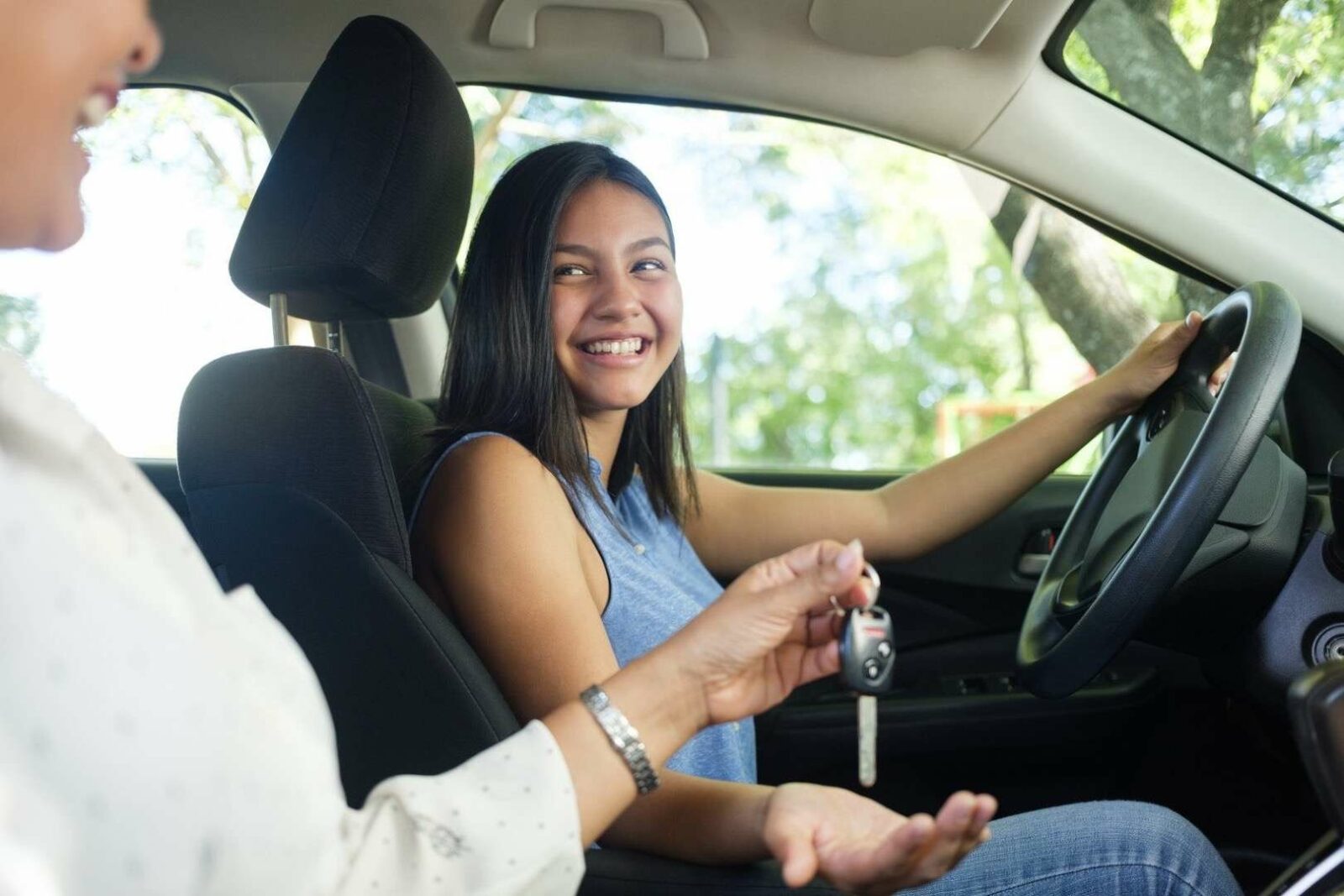
Selecting the right vehicle for your teen driver can be perplexing and finding the right one for them is a decision that will affect their driving behavior in the future. The right car can foster responsible driving and ensure safety in a car crash. Key factors to consider include safety, reliability, and affordability.
Teen Car Safety Check: What Safety Tips Should You Consider While Choosing the Best First Car for Teens?
Keep in mind the following safety tips while choosing a car for your teen:
- Avoid vehicles with a sporty, high-performance image that could entice young drivers to indulge in speeding and test the vehicle’s limits.
- While SUVs and pickup trucks may appear secure due to their size and weight, they have a higher likelihood of rolling over in a collision. When combined with a teen driver’s already elevated crash rate, this can lead to potentially deadly outcomes.
- Opting for newer mid-size and full-size passenger cars is recommended as they provide ample weight and modern safety features. On the other hand, small cars offer low crash protection due to their size and weight.
- When searching for a car, consider models equipped with supplementary airbags, such as side and curtain airbags, in addition to the standard driver and passenger airbags. These additional airbags provide an extra layer of crash protection.
- Look for safety features such as Electronic Stability Control and Anti-lock Braking System. Additionally, intelligent seat belt reminder systems serve as a helpful reminder for drivers and passengers to wear their seat belts at all times.
- Once you have decided on a car, make sure to verify its safety ratings through either the National Highway Traffic Safety Administration or the Insurance Institute for Highway Safety.
Teen Car Endurance Test: What Reliability Tips Should You Consider While Buying the Best First Car for Teens?
Before making a car purchase, ensure its reliability by asking these questions, especially if you’re buying a used car for your teen:
- Does the car come with a warranty, and if so, what does it cover, and for how long?
- Has the car ever experienced any water damage? Water damage can significantly affect its lifespan
- Is the mileage relatively high? Cars with over 12,000 miles per year might have a shorter lifespan.
- Are there any records to confirm regular maintenance?
- Are there any recalls for the car? Check the National Highway Traffic Safety Administration’s recall website for information.
Teen Car Price Negotiation Tips: How to Negotiate Price While Buying the Best First Car for Teens
- When looking for a car and a loan, compare different options as the car dealer may not offer the best loan terms.
- Always get a trusted third-party mechanic to inspect a used car before purchasing it.
- Educate your teenager about all the expenses related to car ownership, including loans, insurance, maintenance, and fuel costs.
- Knowing the potential traffic fines can motivate better driving habits and safety.
- Parents can use the costs of driving as a negotiation tool, like agreeing to cover gas expenses if the teen follows the terms of a parent/teen driving agreement.
Consider vehicle type and size
While picking a car for your teen, take the size very seriously. And, there are pretty good reasons for that. Experts say large-sized cars are more difficult for a teen driver to maneuver.
According to Consumer Reports, bigger vehicles tend to perform better in crash tests. However, a larger car would allow more passengers, meaning they can be a potential driving distraction for teen drivers.
Regardless of the size of the car you’re going for, it’s important to check the graduated driver licensing laws in your state to know the maximum number of passengers teen drivers are allowed to carry in their car.
Moreover, Consumer Reports also says sports cars have a higher rate of accidents as compared to other vehicles. According to Insurance Institute for Highway Safety, sports cars typically feature high horsepower which can tempt teen drivers to test their limits. Therefore, parents should avoid getting sports cars for their teens.
You need to factor in your budget and your teen’s maturity level while picking the car’s size.
Review the car’s safety ratings and features
Newer Cars Have Better Safety Features: When it comes to choosing the best cars for teen drivers, safety becomes paramount. According to Consumer Reports, newer cars tend to offer advanced safety and crash protection features. Therefore, it’s you should consider going for a newer car to ensure the utmost safety for your teen driver.
NHTSA’s 5-Start Ratings: Apart from safety features, you should also consider checking a car’s safety ratings. While ratings supplied by car manufacturers are a good indicator of safety measures, it’d still be better to look at the results from a safety-research group. For example, the five-star rating program by the National Highway Traffic Safety Administration (NHTSA) is a great indicator of a car’s excellent crash protection performance.
Advanced Safety Features: Always aim for cars with advanced safety features such as automatic emergency braking and forward-collision warning. These features, according to Consumer Reports, would help teen drivers with visual/audio warnings and alert them about potential blind spots, ensuring optimal safety.
Assess maintenance costs
Consider the routine maintenance costs of a car before choosing a car for your teen, especially if you’re planning to buy a luxury car. Regular maintenance costs would typically include the price of oil changes as well as parts and tires.
According to AutoTrader, luxury cars tend to feature high-end gadgets with specialized parts, making their maintenance more expensive than relatively cheaper cars.
Moreover, as per Consumer Reports, larger cars would mean lower fuel economy and higher fuel consumption compared to smaller cars. So, you need to factor in that aspect as well.







